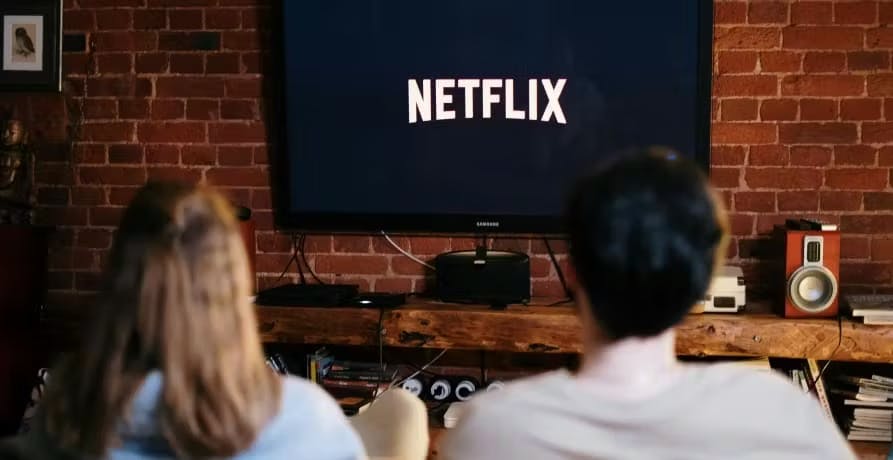ESG / CSR
Industries
What's the environmental impact of streaming?



Streaming is now a cornerstone of our daily entertainment. From binge-watching popular shows on platforms like Netflix and Amazon Prime to streaming live events on social media, the ease and convenience of streaming services have transformed how we access content. But as we effortlessly swipe and click our way through constant streams of videos, music, and podcasts, we need to consider the environmental impact of our streaming habits.
Recent studies have started shedding light on this often-overlooked aspect of our digital lives. According to Forbes, the average American streams around 3.1 hours of content per day, almost 21 hours per week. This statistic hints at the environmental footprint of streaming content. In this article, we’ll dive deeper into the topic, exploring the various elements contributing to the environmental impact of streaming and the measures that can mitigate these effects.
In this article, we’ll explore the often-overlooked environmental impact of streaming content.
The rise of streaming
Gone are the days of driving to Blockbuster to rent the latest movie, or ordering a DVD from Netflix to be sent to our home. Streaming is now a mainstay in our daily lives. Services like Netflix, Amazon Prime, and Disney+ are the norm, serving up everything from binge-worthy series to documentaries, and even live sports.
This shift didn't happen overnight. It owes a lot to technological advancements – think high-speed broadband and 5G. These have turned streaming from a sluggish affair into a smooth, high-quality experience. And let’s not forget the pandemic’s role. With COVID-19 locking us indoors, streaming became more than entertainment; for many, it was a lifeline to the outside world. In the UK for example, daily streaming doubled to a total of 1 hour 11 minutes per day for the average UK citizen.
But streaming isn't just about Netflix binges or catching the latest movies. It’s also about music – Spotify and Apple Music for example. And platforms like Twitch and YouTube Live have opened up a whole new world of live streaming. We're not just watching different things - we’re interacting with media in entirely new ways.
With streaming so ingrained in our everyday routines, we need to ask ourselves: what’s the cost to our planet? Behind every stream, there’s a vast network: data centers, transmission systems, and devices – all with their own environmental impacts. To truly grasp streaming’s footprint, we need to evaluate the environmental impact of these aspects.


Understanding the carbon footprint of streaming
Data centers
Data centers are essential when it comes to streaming. They’re the digital storehouses for our favorite movies, shows, and music. Their role is to store and manage data, process requests, and deliver content to users. But this service comes with a substantial energy cost. Data centres and data transmission use approximately 240 to 340 TWh per year or about 1 to 1.3% of the world's electricity usage.
Yet despite the huge growth of global internet traffic and more than doubling of data center workloads since then, their energy use has remained relatively flat. This is largely due to significant improvements in the efficiency of IT hardware and a transition to more efficient hyperscale data centres. These hyperscale data centers are more energy-efficient because they utilize cutting-edge technology and are designed to handle larger volumes of data more effectively.
It’s also worth noting that not all data centers have the same environmental impact. Those connected to electricity grids with a higher share of renewable energy sources are less damaging to the environment - for example, a data center operating in Norway where 98% of the electricity is sourced from renewables will be much more environmentally friendly than one operating in India, which is heavily reliant on coal.
Data transmission
The act of streaming content involves more than just data centers, it also requires a complex network of cables, routers, and servers to transmit data from these centers to our devices. This data transmission network is another significant consumer of energy. As is the case with data centers, despite the rapid growth in demand for digital services, these emissions have increased only modestly. This is partly due to improved energy efficiency and the adoption of renewable energy in the operation of these networks, alongside the broader trend of decarbonizing electricity grids.
Innovations in network technology and increased energy efficiency have also helped to reduce the environmental impact of increased data traffic. For example, improvements in server efficiency, the use of more energy-efficient networking equipment, and better network management have all contributed to reducing the energy intensity of data transmission.
The role of devices
Our smartphones, tablets, TVs, and computers (the end-points for streaming) also collectively contribute to emissions from streaming. A substantial portion of the energy consumed when we stream our favorite TV shows or listen to music can be attributed to these devices.
Televisions, particularly larger models, tend to consume more electricity compared to other devices. For example, a 50-inch LED television consumes significantly more electricity than a smartphone or a laptop. This is particularly noteworthy considering that we stream a substantial portion of TV and films on our televisions. Phones, on the other hand, are much more energy-efficient, which means that data transmission accounts for a larger share of their emissions when streaming.
However, it should be acknowledged that the energy efficiency of streaming devices has also been improving over time. The shift from older technologies like CRT to more modern LCD screens, and from home computers to more energy-efficient tablets and smartphones, has contributed to reducing the energy footprint of streaming.
However, the growth in the consumption of streaming media is another factor to consider. The rise in streaming subscriptions and usage can lead to an increase in overall energy consumption by these devices, even with advancements in energy efficiency. The energy consumed by streaming on a device depends on various factors including the resolution of the video (SD, HD, UHD/4K), the type of network connection (WiFi, cellular), and the efficiency of the device itself.
How streaming is becoming more sustainable
As the environmental impact of streaming becomes increasingly apparent, the industry is taking steps to implement more sustainable practices. Both service providers and consumers play a critical role in this transition.
Renewable energy in data centers
One significant move towards sustainability is the increasing use of renewable energy in data centers. As previously mentioned, hyperscale data centers, which are central to streaming services, are leading this change. Companies like Amazon, Microsoft, Meta, and Google are among the top corporate purchasers of renewable energy through Power Purchase Agreements (PPAs). This shift is not just about reducing carbon footprints - it also protects these companies from energy price volatility and enhances their brand reputation.
Improving energy efficiency
Alongside the use of renewable energy, there's a strong focus on improving energy efficiency. This includes the deployment of more efficient hardware in data centers, optimization of software to reduce energy use, and designing consumer devices that are more energy-efficient. The transition to more efficient 5G networks, for example, is expected to improve energy efficiency in mobile data transmission.
Utilising waste heat
Data centers generate a significant amount of heat, which typically requires additional energy to cool. However, there's a growing trend in using this waste heat for practical purposes - referred to as data center heat recovery and reuse. For example, some data centers in cooler climates use the waste heat to warm nearby commercial and residential buildings, reducing the need for other heating sources. This not only makes use of what would otherwise be a wasted resource but also contributes to overall energy efficiency.
Consumer awareness and action
On the consumer side, awareness of streaming’s environmental impact can drive more sustainable habits. Simple actions like reducing streaming quality when high resolution isn't necessary, or streaming over WiFi instead of cellular networks, can reduce energy use. Consumers can also support services that commit to using renewable energy and sustainable practices.
Policy and regulation
Policy and regulation can further guide the streaming industry toward sustainability. This might include incentives for renewable energy use, standards for energy-efficient hardware, and guidelines for waste heat utilization. Policy initiatives can accelerate the transition towards more sustainable streaming.


The future of streaming
So what does the future hold when it comes to developments within the streaming sector and how they might shape its ecological footprint?
- Trends in streaming content and practices - The landscape of streaming content is changing, with streaming services experimenting with different release schedules, like weekly episode releases instead of full-season drops, and expanding into short-form content to cater to audiences with limited time. These shifts in content and distribution practices could affect streaming's environmental impact by altering user engagement patterns and data consumption behaviors.
- Advancements in video compression and streaming speeds - Technological innovations are helping to cut required bitrates significantly, which could potentially reduce the energy required for streaming high-resolution video. The introduction of 5G technology has also increased bandwidth and streaming speeds, helping to improve efficiency.
- Environmental cost of device manufacturing - The manufacture of digital devices such as laptops and televisions has a significant environmental impact. The extraction and refinement of critical materials, like rare earth elements, for these devices are resource-intensive, contributing to ecosystem degradation, water stress, biodiversity loss, and carbon emissions. Moreover, the manufacturing process itself is highly energy-demanding, often overshadowing the energy used during the device's operational life.
- Challenges of network infrastructure - Network infrastructure, essential for data transmission in streaming, has its own environmental costs. Despite advancements in energy efficiency, the expanding demand for data-intensive technologies like video streaming, social networks, and AI systems is likely to increase the energy bill of network infrastructures.
- Large-scale machine learning's environmental footprint - AI technologies, including large language models (LLMs) like ChatGPT, are becoming integral to streaming platforms for personalized content recommendations and user interaction. Training these models requires significant computational resources and energy, contributing to a considerable carbon footprint.
What about Greenly?
At Greenly we can help you to assess your company’s carbon footprint, and then give you the tools you need to cut down on emissions. Why not request a free demo with one of our experts - no obligation or commitment required.
If reading this article has inspired you to consider your company’s own carbon footprint, Greenly can help. Learn more about Greenly’s carbon management platform here.



